
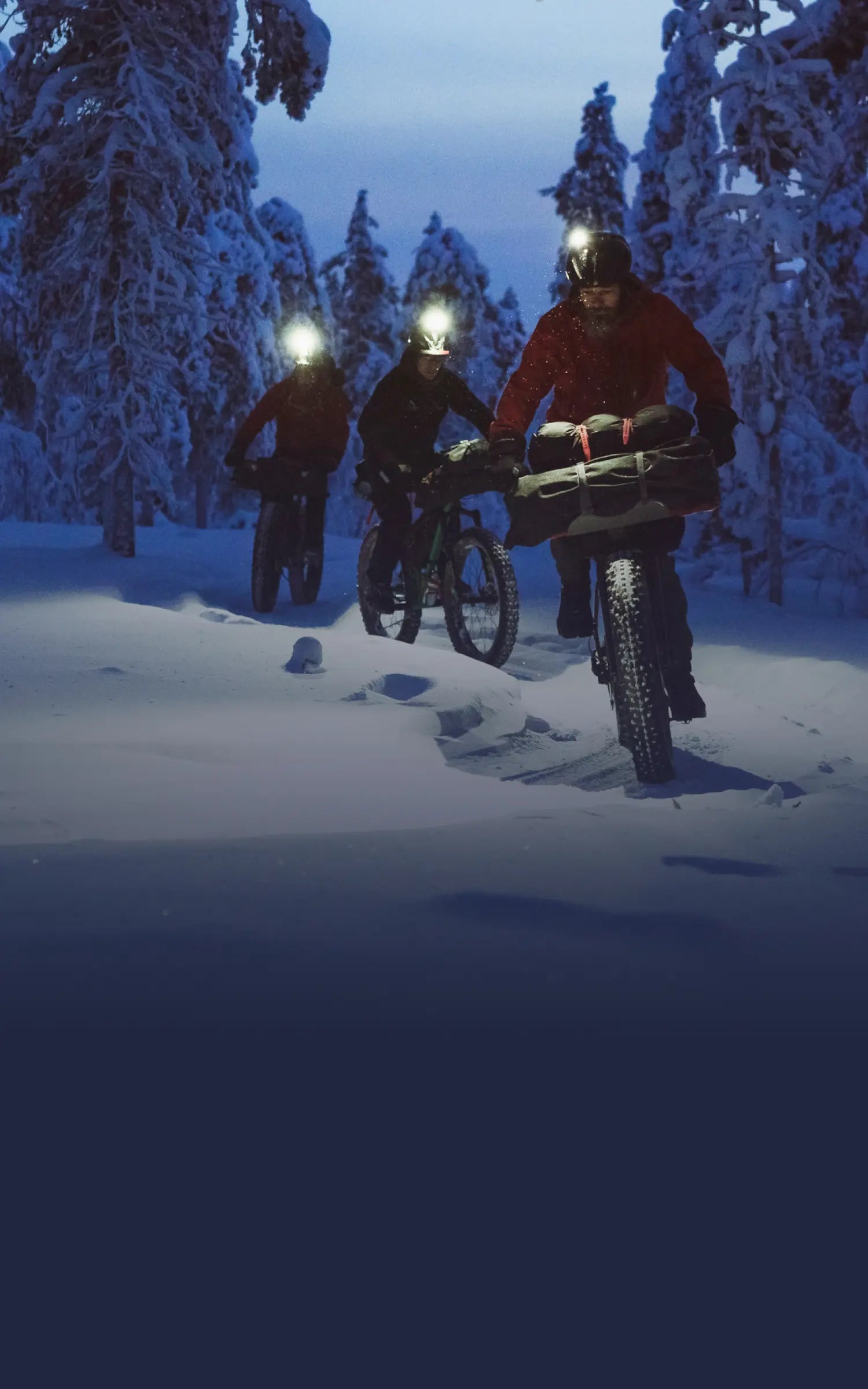
SUUNTOブログ
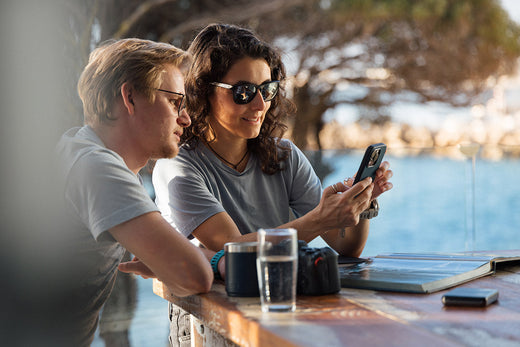
Diving Deeper Into Your Dive Data in the Suunto App
Diving is about more than just exploring the depths, it's a journey of continuous improvement and mastery. Learn how to use Suunto app throughout that process
Technology has become our trusted companion in the digital age, guiding us through the underwater world and empowering us to explore our limits. With the Suunto app at our fingertips, divers unite to share insights, harness cutting-edge features, and elevate their diving skills to new heights.
Join us as we delve into the depths of data analysis, uncovering the secrets that will make you a better diver with every plunge.
Dive profiles, dive logs and trends
One of the most critical pieces of data for any diver is their dive profile. The Suunto app provides detailed dive profiles, including:
Dive time
Start and stop times
Average and max depth
An algorithm deviation alert if present during the dive
Maximum and average temperature
Gas list of active and enabled gases
Start and end pressure if linked with Suunto Tank POD
Avg gas consumption for each gas if linked with Suunto Tank POD
Current Gradient Factors
CNS and OTU values
Average heart rate if enabled
Surface time
Analysing your dive profiles helps you understand your diving patterns, identify areas for improvement, and adhere to safer diving practices. Paying attention to events such as alarms, nearing no decompression limits, safety stops, ascent speed penalties, and extra time allows you to refine your practice and enhance your overall experience.
The app's comprehensive dive logs enable you to track your progress over time, identify trends, and set goals for future dives, whether aiming to increase dive time, extend gas usage, improve buoyancy control, or explore new sites confidently.
Gas consumption
Connecting with the Suunto Tank POD before a dive makes it easy to monitor your gas consumption during the dive. The Suunto app logs your gas usage over time, providing insights into your efficiency. Analyzing your consumption rate can help identify areas for optimising breathing techniques, such as improving buoyancy or learning better breathing strategies like pre-dive visualisation to help you relax more. This can aid in more effective planning for future dives. Factors such as depth, dive duration, current strength, equipment efficiency, proper weighting, individual physiology, water temperature, and appropriate dressing significantly influence your breathing rate. Understanding how these factors impact your dives helps form better habits and enables improved dive planning in the future.
Environmental conditions
Dive planning and safety get a whole lot more exciting when you truly understand the environmental conditions. The Suunto app lets you dive into a treasure trove of data, recording everything from real-time water temperatures at various depths while visibility, current strength, and weather conditions can be recorded in the notes. Imagine being able to anticipate the perfect dive site or tweak your plans based on a detailed history of your past dives. With this info at your fingertips, you're not just diving, you're mastering the underwater world, ready to adapt and conquer whatever the ocean throws your way!
Daily well-being
Track your steps, sleep, and calories with the Suunto app to keep a perfect balance between training and rest, ensuring you're always at your best. Use the feeling monitor at the end of each dive to see how your daily well-being compares to your dive experience. The Suunto app keeps all your activities—sports, adventures, and dives—in one place, with a home screen view that makes tracking your key activities a breeze.
Training load is a standout feature in the Suunto app, quantifying your training stress using Training Peaks’ Training Stress Score (TSS). Suunto app uses TSS to quantify training load. TSS is calculated based on duration and intensity. The intensity can be based on heart rate, pace or power.
To get a better understanding of the TSS values, it is good to know that a one-hour time trial effort equals 100 TSS. At the same time, a three-hour easy bike ride can accumulate the same amount of training stress. The value always depends on the intensity and duration of the effort.
Get your anaerobic threshold settings right for accurate TSS calculations, with adjustable intensity zones on Suunto devices. Track your long-term training load through the app's Diary ‘Progress’ view, monitoring Cumulative Training Load (CTL), Acute Training Load (ATL), and Training Stress Balance (TSB) to stay fit and avoid over-training.
Check out your daily activity levels or dive into your sleep patterns with the sleep tracking feature. Boosting your sleep quality today can make you a better diver tomorrow. Only time (and tracking) will tell!
Be the first to know
Get notified about the latest news, software updates, and improvements for your dive computer. With the Suunto app, divers have a powerful tool to enhance their skills, monitor their progress, and make informed decisions underwater and beyond.
From analyzing dive profiles and tracking gas consumption to understanding environmental conditions and maintaining daily well-being, every aspect of your diving journey is covered. The app not only empowers you to dive safer and smarter but also encourages continuous improvement with its comprehensive data insights and user-friendly interface.
So whether you're a seasoned diver looking to refine your technique or a beginner eager to explore new depths, the Suunto app is your ultimate companion.
Dive deeper, explore further, and enjoy the underwater world with confidence, knowing that Suunto is with you every step of the way.
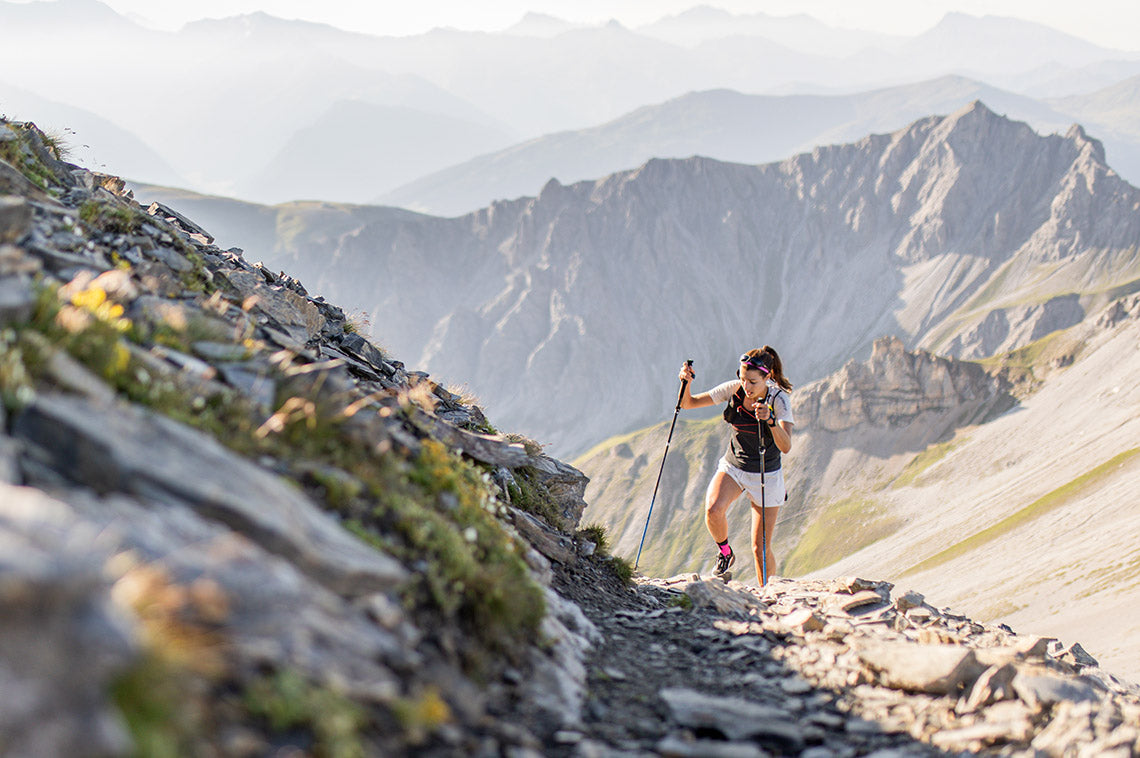
Suuntoのクライムガイダンスで、これからの地形に備えよう
SuuntoアプリおよびSuuntoウォッチのルートナビゲーションにおけるルート高度プロファイルが、さらに進化しました。新しいSuunto Race Sの登場に合わせて、最新のクライムガイダンス(Climb Guidance)機能をSuunto Race、Suunto Vertical、Suunto Ocean、Suunto 9 Peak Pro(ソフトウェアバージョン2.35.34以降)にも搭載しました。
この機能は、ルートを計画する段階でも、実際のトレイル上でもあなたをサポートします。ペース配分を最適化したり、レースで決定的な動きを仕掛けたり、あるいは純粋にアウトドア体験を高めるためにも活用できます。
こちらから、アウトドア系ベテランブロガーによる詳細なレビューをご覧いただけます:おるやまブログ
ルート計画の段階で、登りを把握しよう
ルートを計画する際、高度プロファイルはリアルタイムで生成されていきます。プロファイル上のカラーコードは、地図上の色分けと対応しています。
Suuntoアプリでルートを計画する際、ルートは複数のセクションに分けられます — 登り(climbs)、上り坂(uphills)、下り坂(downhills)、下り(descents)、平坦(flats)。これらのセクションは、地図上だけでなく、下部の高度プロファイルでもカラーで視覚化されます。登りは赤、上り坂はオレンジ、下り坂はライム、下りは緑、平坦は青で表示されます。
セクションの分類は、登り(または下り)の距離と傾斜の度合いを考慮しています。この分類では、登り(climbs)は上り坂(uphills)よりも厳しく、下り(descents)は下り坂(downhills)よりも大きく扱われます。
ルートを計画する際、高度プロファイルはリアルタイムで更新されます。計画の段階ですでに、高度プロファイルを操作して各ポイントが地図上のどこにあるかを確認できます。これは、これから進むルートを事前に把握するのに非常に役立つ方法です。
アクティビティ中にアラートを受け取り、詳細を拡大して確認
高度プロファイルの全体表示(左)と、登りセクションの拡大表示(右)。
クライムガイダンスのセクションは、計画したルートとともにウォッチに同期されます。ナビゲーションを開始すると、デフォルトではルートを1画面で、次の画面で高度プロファイルの概要を確認できます。
Suunto RaceおよびRace Sウォッチでは、デジタルクラウンを使って高度プロファイルを拡大できます。Suunto VerticalおよびSuunto 9 Peak Proでは、上部ボタンを押して拡大、長押しで縮小できます。(ヒント:同様に地図表示でも拡大・縮小可能です。今回の最新ソフトウェアアップデートで、縮小時の表示範囲は最大20kmに更新されました。))
高度プロファイルの概要から拡大すると、現在のセクションをより詳細に確認できます。例えば、そのセクションでの登りの進行距離や残り距離、高度プロファイル上での現在位置を確認できます。
新しいセクションの開始100メートル手前の通知(左)と、セクション開始時に詳細を表示する全画面通知(右)。
登りに近づくと、開始100メートル前に通知が届きます。セクションが始まると、垂直距離・距離・勾配などの詳細を表示する全画面通知が表示されます。下りセクションでも同様の通知が届きます。ルートの上り坂、下り坂、平坦セクションでは通知は表示されません。
登りは、難易度に応じて1〜4およびHC(ホール・カテゴリー)で分類されます。
セクション通知は、エクササイズ設定でオフにすることができます。アクティビティを開始する前に、エクササイズ設定までスクロールし「クライムガイダンス」を選択します。そこで通知のオン・オフを切り替えられます。また、勾配をパーセンテージ表示にするか角度表示にするかも選択できます。デフォルトでは勾配はパーセンテージで表示されます。
登りの通知および勾配設定は、アクティビティの種類ごとに保持されます。同じアクティビティを次回開始する際には、自動的に設定が記憶されます。
[AIによる自動翻訳につき、誤訳が含まれる場合があります。]
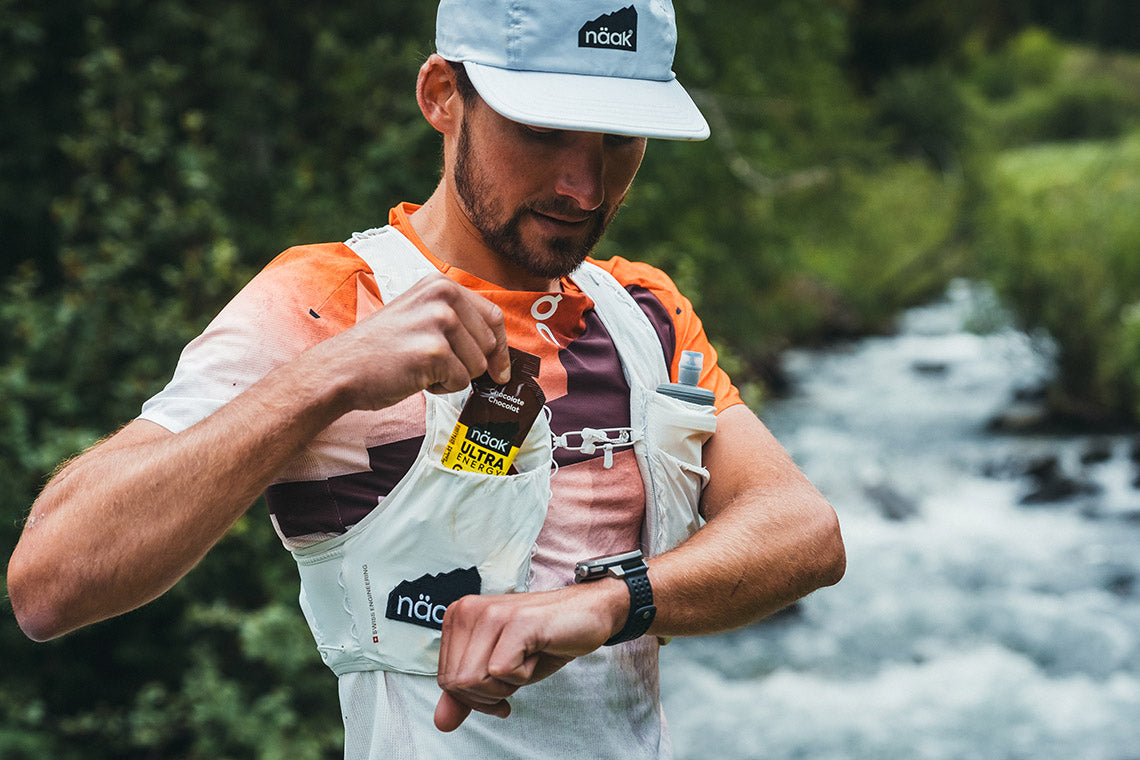
Sync Your Tailored Näak Nutrition Plans to Your Suunto Watch
We have partnered with the nutrition experts at Näak to provide you with real-time nutrition guidance.
Gastric and dietary issues affect 85% of runners and are the leading cause of abandonment, says Näak. The company has made reducing these figures their greatest challenge.
First, they created the Nutrition Calculator: a simple, concrete, and user-friendly online tool that designs personalized nutrition plans for you, based on your profile, goals, and race characteristics.
Now, Näak partners with Suunto to sync your custom nutrition & hydration plan to your Suunto watch for real-time guidance. A plan is a plan, but you also need to execute it well. That's when the SuuntoPlus Näak Nutrition Guide comes into play!
How to Use
1. Go to the Näak website and plan your nutrition needs for your race. Select the race you are interested in. Fill in the required info, like your personal profile and a target time.
2. Click ‘Add to Suunto’ on the result page to connect your Näak and Suunto accounts. The plan is then pushed to your Suunto account.
3. Before starting an activity, go to ‘Exercise settings’ -> ‘SuuntoPlus’ and scroll down to select ‘Näak Nutrition Guide’ for your race.
4. During the activity, you will see the nutrition guidance on its own screen on your Suunto watch.
All images by Simon Morice. Athlete Arthur Joyeux Bouillon.
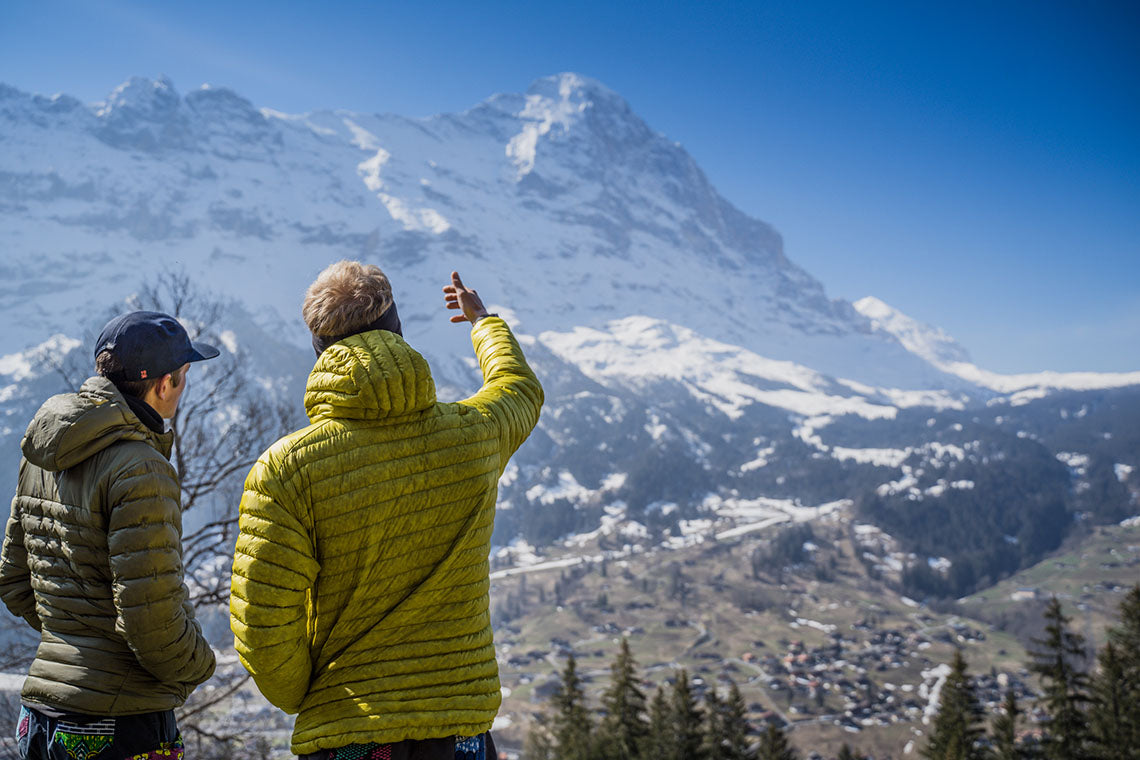
From Bikes to Peaks: The Historic Quest of Bike2Eiger
Join Suunto ambassador Philipp Reiter and his friend Martin Schidlowski as they retrace a historic journey to the Eiger North Face in their film, Bike2Eiger.
Suunto ambassador Philipp Reiter invited his childhood friend and climber Martin Schidlowski on an adventure that combined history with the modern-day challenges of mountaineering. Riding 600 km from their home in Berchtesgadener Land, Germany, to Grindelwald, the base of the Eiger in Switzerland, and attempting to climb its notorious north face was merely the backdrop for something more meaningful and thought-provoking.
We caught up with Philipp to discuss his film, Bike2Eiger. The film has been touring mountain film festivals for the past winter and is now released online. Read on – and watch the film below!
Philipp Reiter and Martin Schidlowski are friends since childhood.
You were following in the footsteps of some true Alpinist legends. Who were they and what was their story?
Anderl Hinterstoisser and Toni Kurz were two alpinists from the Berchtesgadener Land, where Martin and I also grew up. In the 1930s, they wanted to solve the last unclimbed problem of the Alps - the Eiger North Face. As they had no money to travel by train, they went from Bad Reichenhall to Grindelwald by bike. (Read more about them here.)
What is your connection with your adventure buddy Martin?
Martin Schidlowski is my kindergarten buddy. We have done many alpine adventures together, running, climbing, and mountaineering. Since the beginning, we have had the same mindset and passion for the mountains. He is a super good climber and alpinist, and I am more of the endurance athlete in our team.
Not the conditions the duo was hoping for.
The adventure started with three long days in the saddle. How did that go?
Haha, not very well! 1.5 hours after we started, we were stuck and had to push the bikes through 30–40 cm of fresh snow. Generally, it was super cold, and we underestimated the weight of the bags. We carried in all our gear – alpinism by fair means. The first night, the police also kicked us out of our little wood cabin as in Austria sleeping somewhere out counts as illegal camping.
Did you start to question why you didn’t simply drive to the mountain?
We wanted to experience the same as the two pioneers in the 1930s, which is why we also took the bikes.
Studying the route and the weather are part of any adventure.
Do you think Martin will ever again go on a bikepacking trip?
No, never! He had never ridden more than 100 km before, and on day one we had to do around 220 km! He did not like it.
And what about you…?
Well, generally, I like cycling a lot as to me it’s the perfect way to explore new areas at a decent speed. But on this ride, my leg warmers were too tight, and I got an inflammation around the knee, which was super painful.
First attempt on the Eiger: too much snow.
The weather conditions and the amount of snow made the first Eiger attempt hard. Is there anything you could have done differently?
At one point, there were just too many people with busy schedules involved in the project, and we couldn’t keep shifting the dates all the time. So, we had only a few time slots planned, and basically, only this one was left. That’s why we started in okay conditions, knowing that it might become too tricky to climb the face. And then there was too much snow.
Mountaineering has a lot to do with conditions. Usually, you need to be patient and wait for the right conditions. It’s never a good idea to rush it in the mountains.
Before the second attempt, the atmosphere was different. Can you explain a bit about what was happening?
When we came back one year later for the second try, we knew that the conditions were very good and that it was just a matter of us making it happen. Also, we didn’t do the bike approach again, which made it easier. When we went up to Eigergletscher to sleep, there was so much positive energy. I remember this situation well.
Second try, better conditions – but different route.
Could part of the mood be that you were so sure that with the right timing and team, you could just show up and finish the project?
Yes, exactly. It was almost like: We just need to climb it now, and that’s it!
Is it possible that the slower approach and early difficulties set you up differently?
Martin and I had done some more training together, like the Matterhorn North Face. We felt more ready than the first time and were more relaxed as we did not have heavy legs from three long days of riding.
Summit of the Eiger!
Did the adventure teach you something?
Most of the time, things come out very differently than we have planned, and we always need to keep the capacity to adapt.
Watch now: Bike to Eiger
Watch now: Philipp Reiter and Martin Schidlowski follow the footsteps of their local mountaineering heroes from the 1930s on a multisport adventure to the "Eigernordwand“.

Get ready for a gravel race!
Nordic Gravel Series team member, rider and coach Joonas Henttala gives his essential tips for a successful gravel race.
Joonas Henttala, a coach and a Nordic Gravel Series team member, has more than 10 years of experience in the professional peloton. In 2023, after ending his road cycling career, he turned to coaching and gravel event organizing, took up trail running as his personal challenge while also riding gravel.
We got in touch with Joonas to get some tips for a gravel race. Read on and be ready for a big, fun day out!
Progressively build your fitness
Gravel races are long and require a strong, aerobic base, which is built by spending quality time in zone 2 and later layering higher intensities and race spesific efforts on top.
Joonas says that consistency and progressively adding training load are the keys to successful endurance training.
“Riding one hour five times weekly is a better start than a five-hour smash-fest once a week. After your body starts to adapt, you can progressively add more training load. It does not make sense to do a huge hero ride way beyond your limits on the weekend and then recover from it the entire following week. The body simply can’t assimilate that and progress will be slow. The aerobic needs required in a long event or race need consistent stimulus over long periods of time.”
The slower speeds and smaller groups make the power output on gravel slightly different from the road.
“On the road there’s often more coasting and higher power peaks, while gravel riding is more grinding, keeping constant pressure on the pedals,” Joonas explains.
Get comfortable riding in a group. (Image: NGS/Falling Leaves Lahti)
Practice your bike handling
Solid bike handling skills are essential as gravel riding can get technical, almost like mountain biking. Especially if your background is in road cycling, practicing your bike handling can be very beneficial.
“If you come from the road, you may assume there’s grip everywhere. But gravel is different. You must learn to find the grip on a surface that’s moving underneath you. Practice different kinds of turns on different surfaces.”
Mountain bikers are comfortable with the varied terrain. For them, Joonas recommends getting comfortable riding in a big group. The first hour of a gravel race can be especially hectic. Still, you should be able to stay relaxed and not get intimidated by leaning on one another or touching handlebars with someone.
“Joining a few group rides before taking part in a gravel race is definitely a good idea. After a few of them, you will start to feel more comfortable,” he promises.
“Solid bike handling skills and experience from group riding help you save energy, too.”
Get to know the course
Knowing the course well is definitely beneficial. However, pre-riding the entire course is often not an option as the distances of gravel events are so long. That’s when the Suunto app comes in handy: Import the route GPX file to the Suunto app (or sync it from a compatible partner service, like Strava or Komoot) and study the course. Look at the altitude profile to identify the big climbs – and descents.
“Try to save some energy for the big climbs. That’s where the strong riders will make their moves,” Joonas instructs.
“That same applies to other parts of the course as well: Try to save energy when riding easy sections, like roads. When the riding gets more technical and the speeds slower, be prepared to hammer.”
The map in the Suunto app is a great way to identify those key sections: Look at the roads, tracks and trails. How wide are they? When is it getting technical? If, for example, a road narrows to a single track, you don’t want to be in the back of the group and stuck in a traffic jam. Take your positions early.
The fun is about to get real! (Image: NGS/Falling Leaves Lahti)
Refuel early
In a long endurance event, a steady pace would be optimal – but often far from reality in gravel races. If you want to stay in the front, the first hour is decisive: You must weigh whether you can afford to ride a little too fast in the beginning to stay with the group without bonking.
Try to also conserve energy: Draft in the group and remember to start refueling already at the beginning of the long race. If you don’t refuel during the first hour, you will have to pay for the consequences later.
“Riding should feel hard, but not so hard that after the first hour, you’ll start to question if you’ll be able to finish the race,” Joonas says.
Having the necessary energy in the bottle for the first hour might be a good idea. This way you don’t need to mess with gels and bars in the heat of the early part of the race.
Remember what’s important
People take part in gravel events with quite different approaches: some are there to win, others to test their own limits. Some simply want to have a good time on the bike and make new friends.
“Gravel races are quite different from road races. Even in the lead group people chat and have smiles on their faces. I certainly hope it stays this way,” says Joonas.
Whatever your goal, ride hard but be polite and considerate of others.
“If you cross the finish line with emptly legs and a big muddy smile on your face, the day has been successful – whatever your goal!”
Coach Henttala himself after Traka 360 in Girona in May 2024.
Learn more about the Nordic Gravel Series

Community-powered training tunes
We asked the Suunto community for your favorite training music. Here’s what you listen to as two Spotify playlists!
In the pursuit of peak performance, the right playlist can be just as essential as the perfect pair of sneakers or a well-balanced meal. Understanding the profound impact music has on our workouts, we turned to the Suunto community for their ultimate training anthems.
The result? Two electrifying compilations curated directly from their recommendations: one pulsating with fast, energetic rhythms to fuel the most intense workouts, and the other, a collection of smooth, easy-listening melodies crafted to accompany moments of serene focus and recovery.
Dive into the beats that inspire, motivate, and elevate our training sessions below!
Fast-paced training music by Suunto Community
We asked you delivered: These power songs get the Suunto community through the tough workouts.
Easy-paced training music by Suunto Community
We asked you delivered: These chill songs get the Suunto community's workouts to flow smoothly.










































































